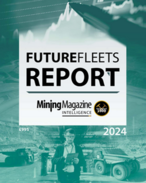The WA Department of Aboriginal Affairs has released draft legislation to amend the 1972 act, saying elements of its regulation were no longer fit for purpose.
The reforms are intended to reduce the amount of administration and propose two expedited approval options via the issue of a declaration or the granting of a permit from the DAA’s chief executive.
According to the bill, the DAA chief executive will have to make a decision in respect of all of an application area but can make a different decision for individual parts of the land.
The DAA will be able to make a declaration that there is no site on the land where an applicant has lodged an application but if evidence later arises that a heritage site exists in the area, the Aboriginal affairs minister may cancel the declaration.
The bill also proposes an expedited permit granting process, whereby the DAA chief executive may deliver a grant even if there is a heritage site in the application area, as long as the site will not be significantly damaged or altered.
Aboriginal Affairs Minister Peter Collier said the amended act would make the state’s heritage protection more contemporary.
“This is the first meaningful change to the way we manage the protection of our Aboriginal heritage in 33 years,” he said.
“The pace of economic development in recent years, particularly within the mining and construction sectors, has highlighted inadequacies in the current legislation.
“Modest changes are required to ensure that our Aboriginal heritage – a state asset of significant importance – can continue to be protected.
“I am confident that the suggested amendments offer a balanced suite of reforms that will satisfy the needs of those who work within the boundaries of the act and that they will deliver an environment of certainty, fairness and consistency.”
Industry reaction to the proposals has been positive, with the Association of Mining & Exploration Companies highlighting the timeliness of the changes and the critical nature of a legislative component in the overall heritage reforms agenda.
“The amendment bill should provide increased clarity and certainty for all stakeholders, as well as improve compliance, efficiency and effectiveness,” AMEC chief executive Simon Bennison said.
“The proposed amendments should also contribute towards a reduction in the timeframes that apply to the approvals process.
“Some surveys can take days or weeks to complete and costs are extraordinarily high for miners and junior explorers to bear with a limited budget.
“In many cases, substantial delays covering several months or years have resulted.
“This timeframe and cost does not include the other approvals processes that companies still need to go through before they even start their work.”
The Chamber of Minerals of WA also applauded the draft legislation, citing the resources sector as a key stakeholder in the heritage system.
“Like all stakeholders involved, industry is looking for a system which is balanced and efficient while effectively protecting Aboriginal heritage sites of significance,” CME deputy chief executive Nicole Roocke said.
“The resources sector is focused on ensuring the amendments result in an improved, efficient and robust system.”
The DAA said it would begin an eight-week period of consultation on the draft bill and invited interested parties to provide feedback via written submission by August 6.























